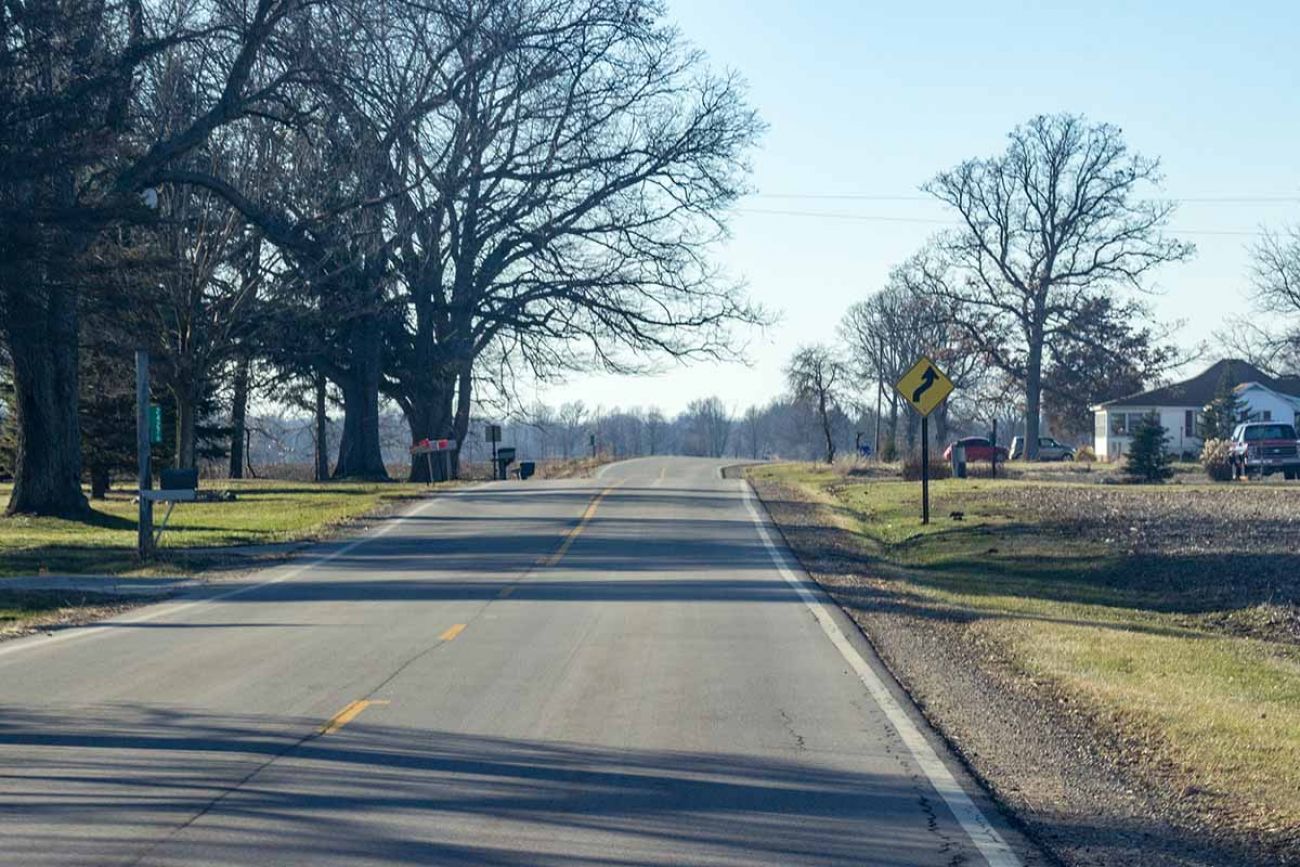Much of Michigan is rural. What will it take for small towns to thrive?

Gary McDowell recalls his small hometown of Rudyard as a vibrant community in Michigan’s Chippewa County.
The town’s population has held steady over the years, even as residents left surrounding areas and the Upper Peninsula, whose population fell over the last decade by about 10,000 to 300,000.
Still, the damage was done to Rudyard, a town of about 1,300 that is 30 miles southwest of Sault Ste. Marie along Interstate 75.
Related:
- Census 2020: Michigan has a few areas of growth, wide swaths of decline
- Census takeaways: West Michigan gains, Detroit & U.P. lose, state more diverse
- COVID reveals Michigan’s internet broadband gap. Will take years to close.
“The downtown was busy with stores and now to go downtown you might be the only person there,” McDowell, the director of the Michigan Department of Agriculture and Rural Development, told Bridge Michigan. “It’s just changed so much.”
McDowell, who still lives in Rudyard, said rural communities across the state have similar problems. Michigan is the second-slowest growing state in the nation, according to the 2020 U.S. Census, and three states lost population (Illinois, Mississippi and West Virginia).
“I've seen the struggles that we face up here and sometimes how we feel like we've really been … left behind,” McDowell said.
Help could be on the way, as Gov. Gretchen Whitmer this week announced the creation of the Office of Rural Development. McDowell will supervise the agency, which is seeking a director who will make up to $175,000.
McDowell said he hopes the new effort will “reverse (the trends) and make our little communities more prosperous and more economically just and viable for our children.”
“Rural Michigan is a fundamental part of Michigan’s economy,” Whitmer said in a statement. By creating the new office, “we are recognizing the unique challenges and opportunities in our rural communities and implementing policies and making investments to … build a more prosperous rural economy.”
During a roundtable discussion Friday, Whitmer said $10 billion in infrastructure aid coming to Michigan from the coronavirus bailout presents an opportunity to invest in programs instead of deciding where to cut.
Economic gains elsewhere in the state often don’t filter down to small towns, Whitmer said, so hiring a point person to help those communities is a big priority as Michigan enters the third year of the pandemic.
Whitmer wants the office to help advocate for broadband internet improvements and reverse problems ranging from lower college graduation rates to population losses. The office is expected to work with other state agencies, tribal leaders and municipal officials.
About 1.8 million residents — nearly 20 percent of Michigan’s population — live in rural areas of the state, according to the U.S. Department of Agriculture classifications.
Due to population density in the state’s biggest cities, almost 94 percent of the state’s land mass is considered rural, including most of the northern Lower Peninsula and all of the Upper Peninsula.
While cities like Grand Rapids and Ann Arbor gained population and businesses, 50 of Michigan’s 83 counties had population losses between 2010 and 2020. That includes 15 out of 16 counties in the Upper Peninsula, including Chippewa County, which lost 4.5 percent of its population since 2010 and is home to Rudyard.
Population is a big problem for small towns, said economist Lou Glazer, president of nonprofit think tank Michigan Future Inc., because of its effects on the workforce.
“If you can’t keep your young people, you can’t have a functioning economy,” Glazer said. “... The future workforce is moving away.”
Finding solutions is difficult, Glazer added, and rural communities across the nation also are confronting the problem.
According to a report from the National Conference of State Legislatures in January 2020, Michigan was not among 10 states with rural development committees or legislation supporting broadband or economic development policy specifically in rural areas.
In 2019, a coalition of northern Michigan chambers had asked that the state prioritize rural development, something that didn’t happen.
However, a $2 million rural development fund was established in 2016 by Whitmer’s Republican predecessor, Gov. Rick Snyder, with initial projects prioritized around Marquette and surrounding counties.
And in 2019, the state began studying increasing agricultural migrant housing to help attract jobs and workers. A report was finalized in 2021, and recommendations could emerge this spring.
Meanwhile, the state exports $2 billion in agricultural products, the food industry is important to rural communities and it offers room to grow, McDowell said. Food processing continues to expand in the state, including the recent announcement that Request Foods in west Michigan’s Holland Township will invest in a $205 million expansion of its frozen foods production, adding about 200 jobs.
More room for growth comes from expanding tourism, McDowell said, such as wine tours in northern Michigan.
But Glazer said farming won’t reverse rural Michigan’s troubles.
“The problem,” Glazer said, is that “agriculture is not a big employer and tourism and food processing are not high-wage industries.”
While Glazer said he supports the move by the state to prioritize rural economic development, increasing wage levels should be part of the plan, he said.
Many agricultural and tourism jobs, for example, do not require advanced training, so median pay may be under $15 per hour, compared to science-based jobs that could pay double that.
“Given the current economy, it’s unclear what rural areas have a competitive advantage that pays decent wages,” Glazer said. Otherwise, the existing job base can “make it hard for people to stay.”
In addition, extending broadband internet access to rural areas will be important, Glazier said. Without it, he said, “the ability to grow a higher wage economy is nearly impossible.”
McDowell agreed, calling broadband one of the biggest focuses for the deputy once the position is filled. The state estimates that about 31 percent of households do not have an affordable, reliable high-speed internet connection.
About $65 billion will fund broadband improvements across the United States as part of President Joe Biden’s $1.2 trillion Bipartisan Infrastructure Deal. Whitmer, meanwhile, established the Michigan High-Speed Internet Office in June.
The new rural position will be a classified civil servant job and not a political appointee, said Jennifer Holton, spokesperson for MDARD. The job was created after an Upper Peninsula lawmaker, Sen. Ed McBroom, R-Vulcan, introduced a bill to establish a similar office in October.
By the end of this year, McDowell said, he hopes results from the new position will increase stability in many of the state’s rural areas “so that it shares in Michigan’s prosperity.”
Business Watch
Covering the intersection of business and policy, and informing Michigan employers and workers on the long road back from coronavirus.
- About Business Watch
- Subscribe
- Share tips and questions with Bridge Business Editor Paula Gardner
Thanks to our Business Watch sponsors.
Support Bridge's nonprofit civic journalism. Donate today.
See what new members are saying about why they donated to Bridge Michigan:
- “In order for this information to be accurate and unbiased it must be underwritten by its readers, not by special interests.” - Larry S.
- “Not many other media sources report on the topics Bridge does.” - Susan B.
- “Your journalism is outstanding and rare these days.” - Mark S.
If you want to ensure the future of nonpartisan, nonprofit Michigan journalism, please become a member today. You, too, will be asked why you donated and maybe we'll feature your quote next time!




